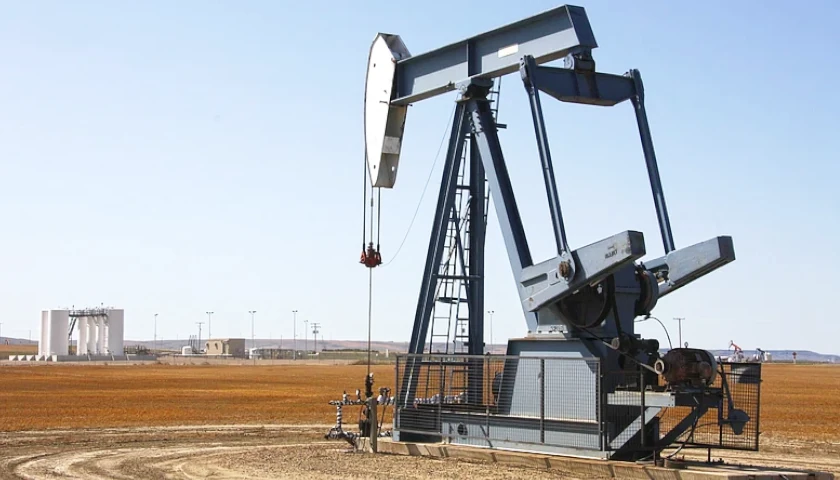by Anthony Hennen
Since 2015, when Democratic Gov. Tom Wolf issued a moratorium on new oil and gas leases on state forest and state park lands, the administration argued it was “striking the right balance” between economic and environmental concerns.
However, Wolf’s executive order didn’t stop all new leases on publicly owned acreage.
Pennsylvania has continued to lease out thousands of acres of publicly-owned streambeds, netting tens of millions of dollars in extra revenue for the state.
The Department of Conservation and Natural Resources has leasing authority for public lands under the jurisdiction of the governor. It determined the moratorium did not apply to streambeds, DCNR Press Secretary Wesley Robinson said.
The public impression, arguably, is the moratorium halted new oil and gas development on public lands. Little effort has been made to publicize these profitable leases beyond legally required public notices and making the contracts publicly available online – and that’s if someone knows to search for them.
Since 2015, the Commonwealth has received $44.7 million in revenue from three dozen streambed leases, Robinson said.
The 36 streambed leases cover 8,740 acres and 366 unconventional – meaning, horizontally drilled – wells. A number of leases were recorded Jan. 27, 2015 – two days before the governor’s executive order – with a public notice following in May. Generally, leases had a delay of one to three months between it being recorded and the public notice.
The executive order cited the importance of “maintaining pure water” in state forest land and the need for more research and understanding the risks of oil and gas development for water quality. Still, the Wolf administration approved the streambed leases.
“After extensive legal review considering the executive order, it was confirmed that ownership of publicly owned streambeds is vested in the Commonwealth; and that these lands are neither owned nor managed as state forest or state park lands,” Robinson said. “As such, the leasing of publicly owned streambeds was permitted to continue.”
Streambed leases have been approved in Allegheny, Armstrong, Fayette, Forest, Greene, Lawrence, Lycoming, Mercer, Tioga, Washington, Westmoreland and Wyoming counties.
Leases could be just a few acres of land (8 acres in one example) to as much as 1,264 acres.
Horizontal well bores typically pass far under streams, about 7,000 to 9,000 feet, DCNR noted.
The revenue comes from a bonus of $4,000/acre when the lease is executed, a 20% royalty payment on the gas produced, and an impact fee. The lease contracts are available on the Pennsylvania Treasury e-Contracts Library, using “streambeds” for the subject matter keyword.
The governor’s office echoed DCNR in its defense of the streambed leases.
“The executive order prohibits new leasing of state forest and state parks lands but ownership of publicly-owned streambeds is vested in the Commonwealth and these lands are neither owned nor managed as state forest or state park lands,” Press Secretary Elizabeth Rementer said.
Practical concerns about efficiency also came into play.
“In these instances, hydraulic fracturing is already planned to occur in the vicinity of the streambeds, and the Commonwealth is acting to best conserve the resource to allow for the efficient development beneath publicly-owned streambeds through a lease,” Rementer said. “If the Commonwealth did not enter into these leases it would strand the resources and reduce the lateral length of wellbores, reducing the efficiency of resource recovery.”
One former environmental official defended the streambed leases on similar terms.
“Submerged land leases are for rights-of-way under stream and river beds owned by taxpayers to accommodate pipelines and more efficient well development on both sides of those water bodies,” said David Hess, who served as secretary of the Pennsylvania Department of Environmental Protection in 2001-03.
Hess framed the scale of streambed leases as minor.
“That’s much different than the wholesale leasing of tens of thousands of acres of state forest lands for natural gas development and associated infrastructure,” he said.
Hess noted that oil and gas companies should develop the leases they already have on state lands, 65% of which remain undeveloped.
“Seems to me those leases, which were supposed to be for the best areas to drill, should be developed first anyway,” he said.
Republicans in favor of expanding production, however, were harsher on Wolf.
“While the governor may not support new gas leases on state property, his office and agencies have had no problem claiming ownership and then leasing under our private landowners’ streams during his time in office. This is hypocritical at best,” said Rep. Clint Owlett, R-Wellsboro. “The only difference is that no one knows about these leases and the money generated for the state.”
Owlett said he now expects “dramatic support” from the governor’s office for HB 2404, a package of bills sponsored by Owlett that would “streamline the process for waterway maintenance” and clarify which agencies have authority over them.
Environmental groups were less than enthusiastic about the leases and their potential impact on the state’s waterways.
“I think the logic for which the Commonwealth has applied to state parks and state forests should rightfully be applied to waterways they have control and jurisdiction over,” said Steve Hvozdovich, Pennsylvania campaigns director for Clean Water Action. “If they’re not doing that, (it sounds like) there’s some type of double standard.”
If nothing else, the administration could do more to inform the public on what the state does.
“The uncovering of this should raise questions in DCNR about providing a little bit of greater transparency about what sort of fracking operations the Commonwealth is undertaking,” Hvozdovich said.
Anthony Hennen is a reporter for The Center Square. Previously, he worked for Philadelphia Weekly and the James G. Martin Center for Academic Renewal. He is managing editor of Expatalachians, a journalism project focused on the Appalachian region.
Photo “Tom Wolf” by Tom Wolf. CC BY 2.0.





